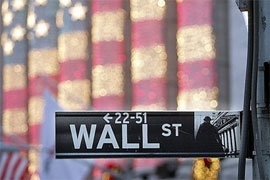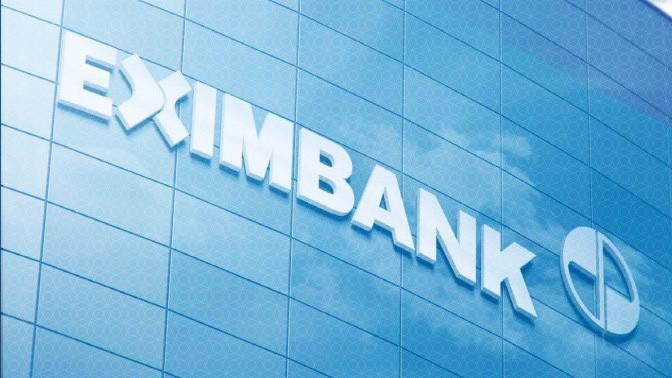US banks show recovery in 2010
 Quarterly earnings season got under way this past week with most banks serving Wall Street and Main Street showing better health, but with legislation and a new financial reality weighing on a few.
Quarterly earnings season got under way this past week with most banks serving Wall Street and Main Street showing better health, but with legislation and a new financial reality weighing on a few.
"The banks are getting healthier but are having trouble increasing revenue," said Gregori Volokhine, at Meeschaert Capital Markets, pointing to the end of some profitable business that sustained banks during the boom years.
While a rosier credit market allowed firms to put rainy-day savings back to work, curbs on own-account trading and the end of the bond market boom made growth difficult.
Nowhere was that more evident than at Goldman Sachs, the most storied of all Wall Street behemoths.
Goldman's profits plunged 38 per cent to $8.35 billion in 2010, amid sharp drops in investment banking and bond trading businesses that slashed revenue.
"Market and economic conditions for much of 2010 were difficult," Lloyd Blankfein, Goldman chairman and chief executive, admitted.
In addition to the US financial-regulation reform under way, which restricts banks in trading their own funds and limits their investments, Goldman is facing jittery clients unnerved by the uncertainties of the financial overhaul, a modest US economic recovery, and Europe's sovereign debt crisis.
"The heydays are over for Goldman," Volokhine said, adding that the bank, whose trading activities were like that of a giant hedge fund, will now have to rely more on its traditional business of investment banking.
Bank of America, the biggest US bank by assets, also showed its fragility.
For 2010, the bank posted a loss of $2.2 billion and wrote off $12.4 billion in charges.
The bank bled $1.2 billion in the fourth quarter alone on the back of falling revenue and a big writedown on its home-loan business.
Bank of America is mired in the problems it inherited from Countrywide, the home lender that it bought during the financial crisis and which has come to symbolize the subprime mortgage-backed securities whose defaults triggered the housing collapse.
The bank also is facing a slew of lawsuits linked to improper home foreclosures and may have to buy back soured mortgages packaged into bonds sold to a group of investors, including Pimco, Blackrock, Metlife and the Federal Reserve Bank of New York.
Bank of America executives estimated Friday that the bank may have to buy back between $7 and $10 billion in tainted assets.
But the picture was not all gloomy.
Investment bank JPMorgan Chase reported net profit in 2010 leaped 48 per cent from the prior year to $17.4 billion, and even managed to raise revenues.
California-based Wells Fargo said it had "record" financial results as profit soared 46 per cent to $11.63 billion.
Citigroup returned to profit in 2010, of $10.6 billion after a $1.6 billion loss in 2009, thanks to fewer loan losses. But Citi put in a weak performance in securities, missing analyst expectations.
Morgan Stanley, which was in the red in 2009, solidly returned to the black in 2010 with profit of $3.6 billion.
For the fourth quarter, profit shot up 60 per cent, buoyed by a surge in revenue.
Amid a depressed housing market and a stubbornly high unemployment rate, the six biggest US banks said credit costs were still too high and defaults on loans are still at abnormally high levels, even if defaults are slowing and credit demand was reviving.
Still, even the most battered of banks appear optimistic.
"We are seeing signs of growth and more economic activity," said Goldman's Blankfein.
What the stars mean:
★ Poor ★ ★ Promising ★★★ Good ★★★★ Very good ★★★★★ Exceptional
Related Contents
Latest News
More News
- BAOVIET Bank ends Visa credit card services, shifts to domestic cards (September 10, 2024 | 18:10)
- SBV offers fresh catalyst for growth (September 10, 2024 | 10:33)
- Credit over-reliance creating imbalance and stagnation (September 10, 2024 | 09:47)
- Standard Chartered Vietnam appoints first Vietnamese CEO (September 06, 2024 | 15:33)
- Uneven credit growth registered in first eight months (September 06, 2024 | 10:01)
- Companies collaborate to support PV Power’s Nhon Trach 3 and 4 (September 06, 2024 | 10:00)
- Brand growth solutions in the banking sector (September 05, 2024 | 14:00)
- Aquaculture stocks lean to speculative (September 05, 2024 | 11:27)
- Citi appoints new head of Financing for Investment Banking (September 04, 2024 | 18:03)
- BAC A BANK enhances options for young enterprises (September 04, 2024 | 09:47)


 Tag:
Tag:





















 Mobile Version
Mobile Version